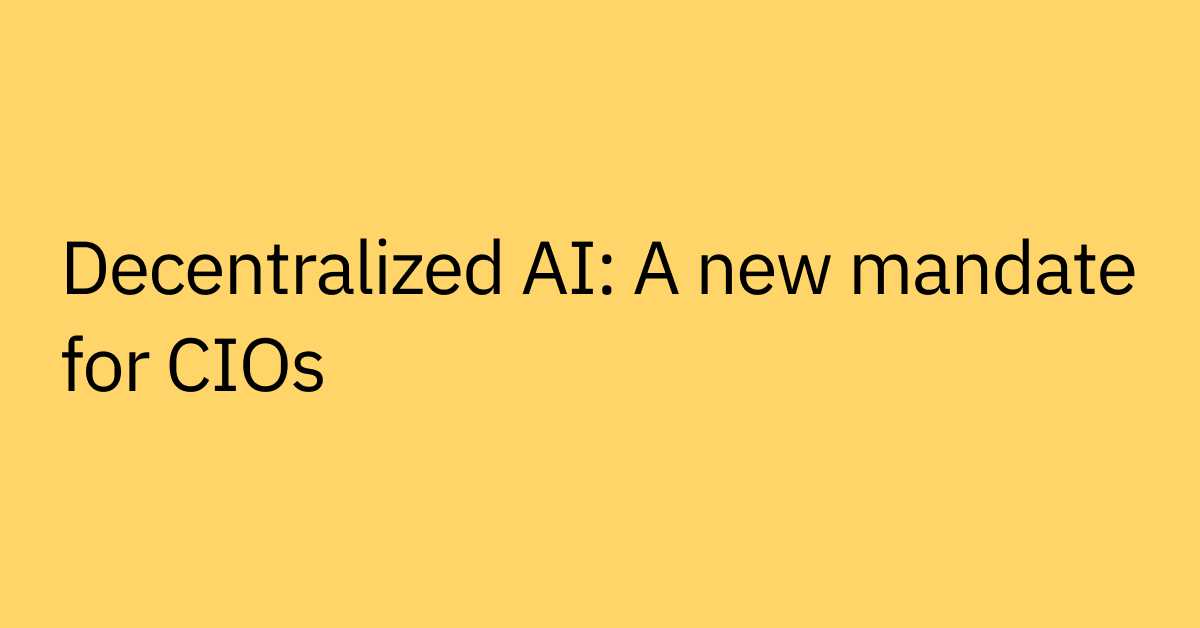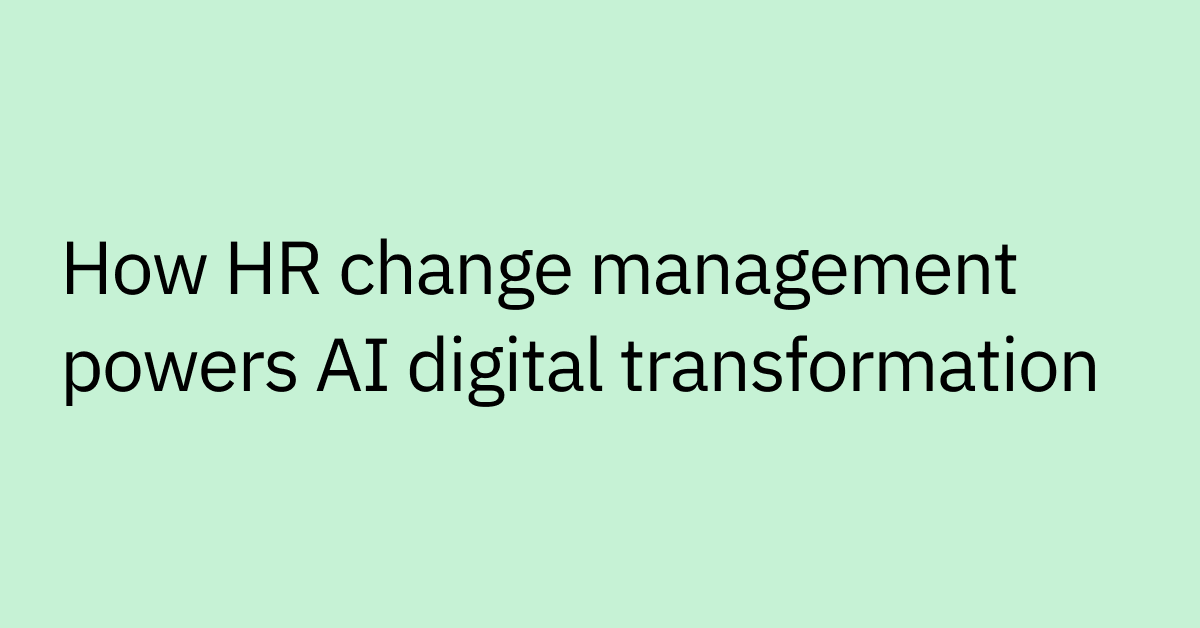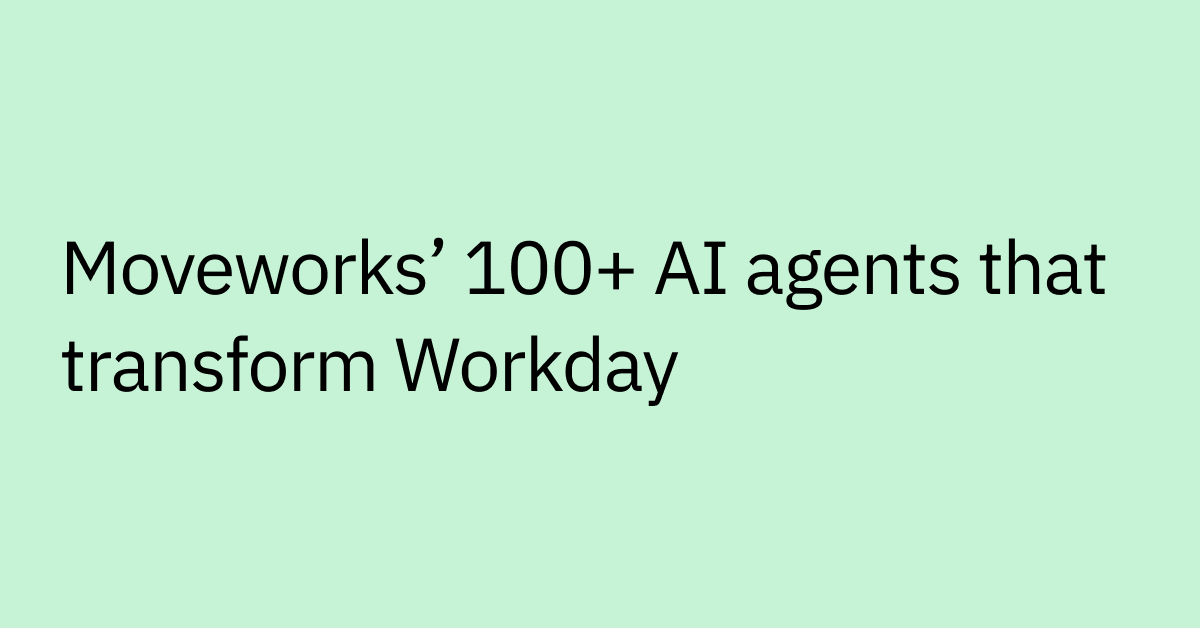Table of contents
Highlights
- Digital transformation requires significant investments in technology, talent, and change management—but hidden costs often derail ROI.
- Unanticipated expenses like technical debt, adoption friction, and rising cloud spend can outweigh planned savings without proactive governance.
- AI and automation reduce total cost by accelerating planning, automating support, and improving adoption through intuitive, conversational interfaces.
- Long-term gains come from adaptive systems that learn, unify workflows, and scale without constant redevelopment or vendor dependency.
- Moveworks helps enterprises cut transformation costs by automating complex business processes and accelerating measurable value realization.
Digital transformation is an enticing initiative: modernizing your tech and processes for greater competitive advantage, operational efficiency, and future-ready capabilities.
But for many CIOs, IT execs, and other transformation leaders, the financial reality feels much different: ballooning costs, tight budgets, and mounting pressure to prove return on investment (ROI) as soon as the initiative begins.
It’s true: Digital transformation can be expensive and often has a range of hidden expenses that surface over time.
Yet so does inaction, and the mounting cost of legacy systems that need constant patching, manual workarounds, and siloed processes that quietly rack up technical debt and drain productivity. These can often end up costing even more in the long run than modernizing would.
Can digital transformation be worth it? Absolutely, yes.
However, to maximize your transformational impact and laid the groundwork for cross team collaboration, your approach should account for the true total cost of transformation. Let's discuss how to clearly plan for hidden costs, what tech enables digital transformation savings, and learn how to measure the tangible organizational ROI of your ongoing digital progress.
What drives digital transformation costs?
Identifying your primary cost categories can help you anticipate where budgets tend to balloon during digital transformation projects.
These can come in a few different forms:
Technology and platform spend
- Software licenses and subscription fees for cloud platforms, SaaS tools, and enterprise applications
- Infrastructure upgrades, including servers, networks, and data storage systems
- Data migration and integration middleware to connect legacy systems
Integration and development
- Custom API development to link disparate systems
- Middleware implementation costs
- Developer hours for building new features and workflows
- Third-party integration specialists
Change management
- Employee onboarding programs and communication campaigns
- User enablement resources and training materials
- Documentation for internal business processes and workflow redesign
- Change management consultants
Personnel costs
- Hiring specialized talent with digital expertise
- Training existing staff on new technologies and processes
- Overtime costs during transition periods
- Temporary staff to maintain operations during implementation
Professional services
- Strategy consultants for transformation roadmaps
- Implementation partners for technical deployment
- Industry-specific advisors
- Ongoing vendor support contracts
These are just a small sample of potential costs that can easily balloon if not carefully managed.
Cost varies considerably by size, industry, and existing digital maturity
Company size and industry requirements create additional variation. For instance, healthcare organizations face stringent compliance requirements, while financial services need ironclad security frameworks. Manufacturing companies? They have to integrate physical and digital systems.
Cost concerns are valid regardless of industry when transformation touches every corner of the organization.
The complexity of integration with existing systems adds another layer of expense. For organizations who have had limited modernization efforts, legacy infrastructure often requires significant modification to work with new platforms, driving up both time and cost.
Want to reduce costs with automation? Read The Ultimate Guide to AI Agents to discover insights and successful digital transformation strategies that can help you leverage AI effectively.
The hidden costs most teams forget about
Beyond the obvious line items, transformation projects contain less visible expenses that often derail budgets.
These some of the hidden costs that frequently catch teams off guard:
- New systems — especially those lacking automation or intuitive workflows — may lead to a spike in support tickets, overwhelming IT teams with tasks like password resets and access requests during critical implementation periods.
- Scaling infrastructure: Going from pilot programs to larger user bases often leads to challenges like rising cloud costs, performance issues, and the need for costly upgrades.
- Adoption friction: This occurs when employees struggle to adapt to new technologies, leading to longer training times, reduced productivity, increased errors, and the use of unauthorized tools to bypass challenges.
- Technical debt builds up: When quick fixes and shortcuts are used to meet deadlines, this can lead to long-term maintenance challenges and higher future costs.
- Poor data quality: This can include duplicates, inconsistencies, outdated, and missing information, spreads across systems, leading to cleanup efforts and impacting analytics and decision-making.
- Hidden vendor costs: These can include extra charges for exceeding service estimates, premium support for complex issues, transaction-based fees, and API call limits that require upgrades.
These expenses rarely appear in business cases but can consistently surface in budget reviews 6–12 months after the fact. Smart transformation leaders anticipate these hidden costs and build buffers into their total cost planning to help sustain and scale over time.
How much is the cost of digital transformation?
Transformation costs vary significantly for individual companies, with midsize to enterprise companies costing anywhere from $250,000 to five million dollars, depending on the scale and ambition of the transformation.
Organizations globally are investing at unprecedented levels in digital transformation, with global spending projected to reach $4 trillion by 2027, according to IDC.
However, the cost of failed digital transformation is also significant. An estimated $2.3 trillion has already been lost to failed digital transformation efforts (as of 2024), largely due to overly complex, poorly structured strategies and a lack of focus on people and culture. For this reason, it's critical to align cross functionally, have the right metrics from the very beginning, and use AI tools to maintain regular feedback loops throughout your transformation process.
How AI can reduce transformation costs at every stage
AI goes well-beyond digitizing existing processes; it also automates complex workflows, delivers regular insights, and makes it simple to measure your digital transformation progress too. Here's how it can help to add value:
- Planning and strategy: AI can speed up production by turning months of planning into weeks by identifying automation opportunities, predicting impact, and enabling greater productivity with fewer manual errors.
- Implementation: AI-powered platforms can be deployed quickly, sometimes in just a matter of weeks. You can also automate support into a single destination, reducing costs, accelerating time-to-value, and reducing the complexity of managing multiple systems.
- Adoption and change management: Conversational AI can help boost user adoption by integrating with familiar tools, interfaces and understanding conversational language, eliminating the need for training on complex tools.
- Operations and optimization: AI can optimize processes by learning from interactions, empowering employees with self-service tools and omnichannel support, and proactively addressing issues, helping to reduce operational overhead.
- Measurement and value realization: AI helps deliver ROI by tracking time saved and tickets reduced. User-friendly dashboards provide easy access to metrics, helping optimize processes and showcase value to stakeholders.
What's the ROI of automation and AI investments for digital transformation?
Building a good business case for AI automation requires demonstrating both immediate wins and long-term value. Ultimately, your numbers should tell a powerful story.
Here are a few examples of how AI is driving down operational costs:
- Reducing IT costs and automating processes: Companies are using AI-driven automation for significant resource savings by automating routine support, reducing manual errors, and streamlining workflows.
- Service desk efficiency: Organizations can speed up resolutions and lighten workloads with AI. Password resets become instant self-service tasks, and first-contact resolution rates can improve, ultimately resulting in decreased ticket volume as AI handles routine queries.
- License optimization: AI can help identify overlapping or underutilized tools. Many companies consolidate software and reduce licensing costs, while improving functionality through more integrated, streamlined platforms.
- Faster implementation timelines: Traditional automation can take a long time to fully deploy. AI-driven solutions is able to be implemented in weeks, reducing reliance on external consultants, lengthy deployments, and associated costs.
- Staffing flexibility: Instead of hiring to handle seasonal or unpredictable demand spikes, organizations can turn to AI to manage volume fluctuations at scale. This can reduce dependency on temporary staffing or costly overtime.
Immediate cost savings
Focus on direct operational cost reductions that deliver measurable results within 30-90 days:
- Infrastructure and IT Costs: Migrating to cloud-based solutions reduces the need for physical servers and on-premises infrastructure, cutting costs associated with hardware, maintenance, and other requirements.
- Process automation and digitization: Replace manual, paper-based workflows (e.g., expense approvals, onboarding checklists) with automated, digital workflows.
- Self-service resolution capabilities: Help reduce service desk FTE hours, as employees handle routine requests on their own.
- License consolidation: Get rid of redundant point solutions by replacing multiple specialized tools with a single, integrated, and easy to use platform.
- AI solutions: Deploy in a matter of weeks instead of months to reduce professional service hours (and ultimately costs) compared to traditional custom development methods.
- Unified service portals: Consolidate fragmented access points into a single interface to reduce confusion, streamline usage, and cut support volume.
- Productivity gains across the organization
Time savings compound across your workforce:
- Employee self-service: Save time with instant policy answers, automated approvals, and streamlined self-service provisioning, reducing delays and simplifying processes.
- Improved engagement: Digital transformation enables personalized user interactions through data analytics, enhancing satisfaction and fostering positive relationships.
- Cross-functional efficiency: Streamline your operations with automation, addressing processes from faster HR onboarding and operations, real-time finance approvals, to automated facilities requests and more
Quantify these gains as "hours saved per employee per month" to build strong ROI models.
Long-term value and scalability
The true power of AI emerges over time:
- IT strategic focus: With AI handling routine tickets and processes, IT professionals have more time for strategic projects, moving from reactive to proactive work to drive innovation.
- Continuous learning: Unlike static automations, AI is able to improves with use. Resolution accuracy increases as new use cases emerge from pattern recognition becoming more valuable over time.
- Flexible architecture: As your business evolves, AI adapts without totally rebuilding. New integrations plug in easily, with processes being updated through conversation, not code.
- Compound benefits: AI can help minimize errors, accelerate product time-to-market, and boost satisfaction for improved employee retention and engagement.
Consider AI as an appreciating asset for your organization, not a depreciating one-time expense. Tools that learn and adapt keep delivering value long after traditional automation would require replacement.
Where automation fails (and how to avoid sunk costs)
Not all automation delivers on its promises. Let's look at some common failure points to help you avoid costly mistakes:
- Too many disconnected tools: Too many specialized automation tools create complexity, forcing employees to juggle multiple logins, interfaces, and processes. Instead of saving time, productivity stalls despite growing tech investments.
- Lack of discoverability: Even well-designed automation fails if employees can't find it. When processes hide behind complex menus or require specific keywords, users revert to manual processes or workarounds like emailing colleagues or submitting tickets, defeating the automation's purpose.
- Complexity and maintenance: Every new automation tool adds maintenance overhead. Updates can break integrations, vendors may deprecate APIs, and new business requirements demand constant adjustments. What started as time-saving automation becomes a full-time job just keeping systems running.
- Process misalignment: Automation built without understanding actual workflows creates friction. This results in the official automated process sitting unused while real work happens through unofficial channels.
- Change management challenges: Many firms don't understand how to embed a transformation across the whole organization. Without proper communication and training, employees resist new tools. They stick to familiar methods, even when they’re less efficient.
- Scaling issues: Solutions designed for 100 users often break at 1,000. Performance degrades while costs escalate. What seemed like a bargain in the pilot phase becomes prohibitively expensive at scale.
How agentic automation enables digitial transformation
AI and AI agents are designed to fundamentally accelerate and scale digital transformation by automating complex business processes, improving productivity, and enabling organizations to adapt quickly.
AI agents use advanced reasoning, planning, and execution across business processes. Their reasoning engine (i.e. brain) supports multiple reasoning loops and memory structures, allowing AI agents to handle complex, multi-step tasks that go well beyond simple automation to accelarate digital transformation.
- Agentic productivity: Employees are made more efficient by AI agents that assist with tasks, which they typically access through a conversational interface. Employees delegate tasks to AI agents, which then orchestrate the necessary workflows.
- Quickly deploy custom workflows: Some agentic platforms allows developers to build or deply powerful AI agents with less code, more speed and greater reliability.These platforms enabling the rapid creation and implementation of robust automations that traditional tools are challenged to match .
- Real-world impact: AI agents automate tasks, connect employees to the right resources, and drive operational efficiency. Learn why over 350 leading organizations use Moveworks agentic AI to increase productivity, enhance employee experience, and achieve lasting digital transformation
The smart way to cut costs while growing innovation
Digital transformation doesn't fail from a lack of investment. Rather, it fails when spending doesn't translate to sustainable value. The real costs include time, complexity, and missed outcomes.
Successful transformation journeys require a fundamental shift in thinking. Instead of bringing on more technology, focus on creating unified, intelligent capabilities that adapt and improve over time.
Moveworks AI platform offers a smarter way forward. Built for true transformation, it uses advanced agentic AI capabilities to help enterprises scale digital transformation efforts with greater value and efficiency:
- Operational efficiency: Automate routine support, enable self-service at scale, reduce manual errors, and streamline workflows for operational savings.
- Easy adoption, improved productivity: Moveworks AI Assistant is easy to use, provides instant access to information, automate support, and has employees spend less time waiting for help and more time on value-added work.
- Transformation and innovation: Modernize business services rapidly, with out-of-the-box functionality and production rollouts in as little as weeks.
- Deploy AI agents faster: Moveworks AI agents automate tasks, connect employees to the right resources, and drive operational efficiency. Agent Studio allows developers to build powerful AI agents with less code and greater reliability, while Agent Marketplace offers hundreds of pre-build integrations.
True transformation cost savings come from adaptive systems that grow smarter over time, not just faster at repetitive tasks. Discover why Moveworks is designed to fundamentally accelerate and scale digital transformation by automating complex business processes, improving productivity, and enabling organizations to adapt quickly.



